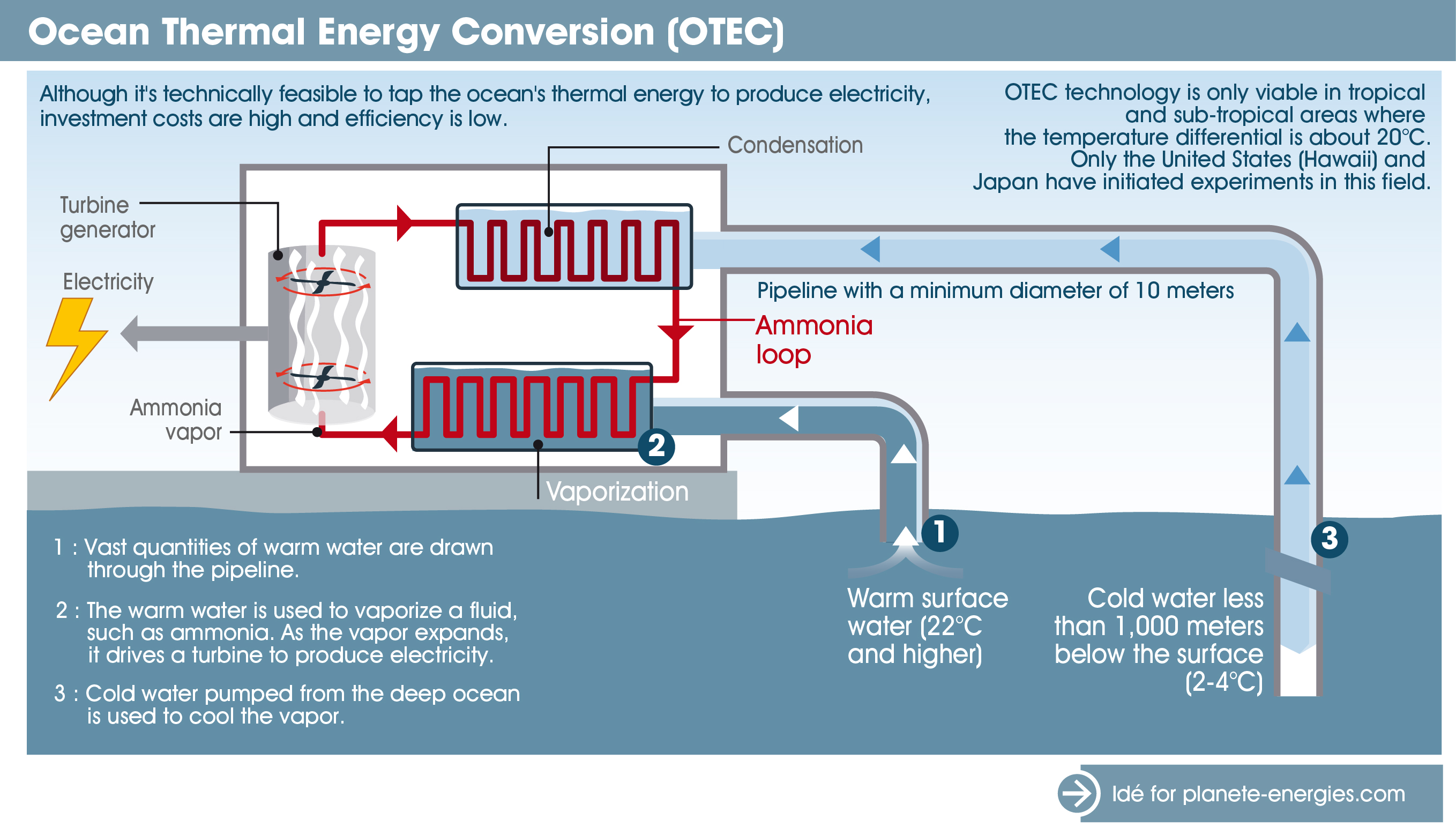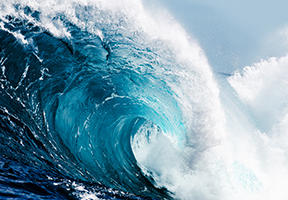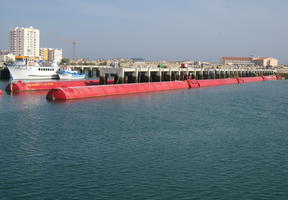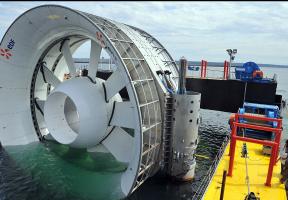What is Ocean Thermal Energy?
5 min read
Using from ocean waters to produce : the idea of this “ocean thermal energy conversion” (OTEC) is not new. However, several major technical obstacles must be overcome and there are few suitable sites for these facilities. Thalassothermal energy and the use of heat pumps can also offer a more modest solution for harnessing the sea's calories to produce heat.

© D. MCNEW / AFP - The temperature differential between surface waters and deeper layers can be tapped.
Exploiting Ocean Temperature Differences
Harnessing the “ocean thermal energy conversion” (OTEC) involves using the temperature differential between warm surface waters (22°C and above) and deeper cold waters (2 to 4°C at 1,000 meters) to vaporize a fluid. The resultant vapor then expands to drive a turbine generator and generate electricity.
To achieve vaporization, the fluid must have a very low boiling point, somewhere between the temperature of the warm seawater and that of the cold seawater. One option is ammonia (NH3), which, at normal pressure, changes from liquid to gas at 15°C.1
When it comes into contact with warm seawater pumped from the surface, the fluid changes states in an evaporator. The vapor then drives a turbine generator to produce electricity, before returning to a liquid state in a condenser in contact with cold seawater pumped up from lower layers.

There are several different technologies for creating OTEC plants. They can be floating on the sea or installed on the shore.
Using the thermal energy of oceans — an abundant, stable resource — produces no direct emissions. But this energy source has a number of disadvantages:
- It can only be tapped in intertropical regions, where the surface waters are warm enough and the deep waters cold enough to obtain a temperature differential of at least 20°C.
- Efficiency — the between the energy used to operate the plant and the energy finally recovered — is very low, around 3 to 5% (by comparison, the efficiency of a gas turbine is around 40%).
- The cost of the facilities is very high: to operate, a power plant requires a very high water flow, which in turn necessitates huge pipes measuring from 8 to 10 meters in diameter.
On a global scale, the potential that could be technically achieved ranges from 10,000 to 80,000 TWh per year. However, given both the R&D spending and specific geographical conditions required, only a handful of countries have launched experiments. The pioneering United States (Hawaii) and Japan have been joined by other countries such as India and Taiwan, as well as France, which has launched demonstrators on Reunion Island, Martinique and Tahiti. Commercial-scale solutions are not expected to come on stream before 2030.
Seawater Heat Pumps
On a smaller scale, but based on the same thermodynamic principle, thalassothermal energy uses the calories provided by seawater to power heating and air-conditioning systems, via heat pumps. Several towns on France's Mediterranean coast have operational installations:
- The Principality of Monaco has been a pioneer in this field since 1960, producing 20% of its heating needs thanks to more than 80 heat pumps that draw their energy from the sea, just a few meters below the surface.
- In 2007, Seyne-sur-Mer in southeastern France began heating some of its public buildings — including a 500-seat theater and municipal offices — and 500 new homes using thermal energy from the sea.
- In 2016, Marseille set up the Thassalia project, which supplies a business district, and the Massileo project, which has been serving the Smartseille eco-district since 2017.
Water from colder seas can also be used for heating and air conditioning. The public library in Visby, Sweden, on the Baltic Sea, uses seawater to maintain a constant, stable temperature that helps preserve its books.
Cold water from lakes can also be used to produce heat. In Zurich, Switzerland, some district heating is provided using lake water, which has a temperature of 4°C, as a source.
The Thermal Energy of the Oceans, a Century-Old Solution
French physicist Jacques-Arsène d’Arsonval first proposed ocean thermal energy conversion in the late 19th century, developing refrigerating machines. In the 1930s, another Frenchman, Georges Claude, experimented with power generation using the temperature differential between warmer surface waters and cooler deep layers. In 1933, he transformed the cargo vessel La Tunisie into a floating plant producing 2,000 tons of ice per day.





















